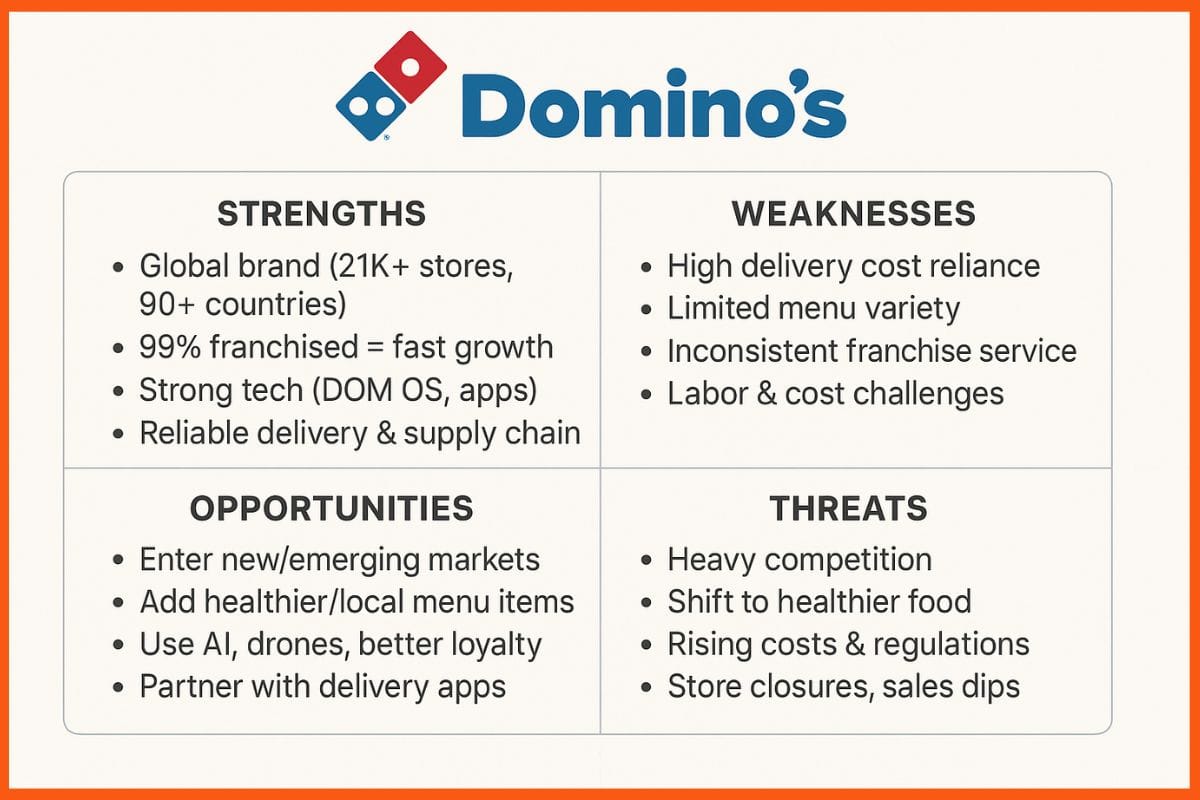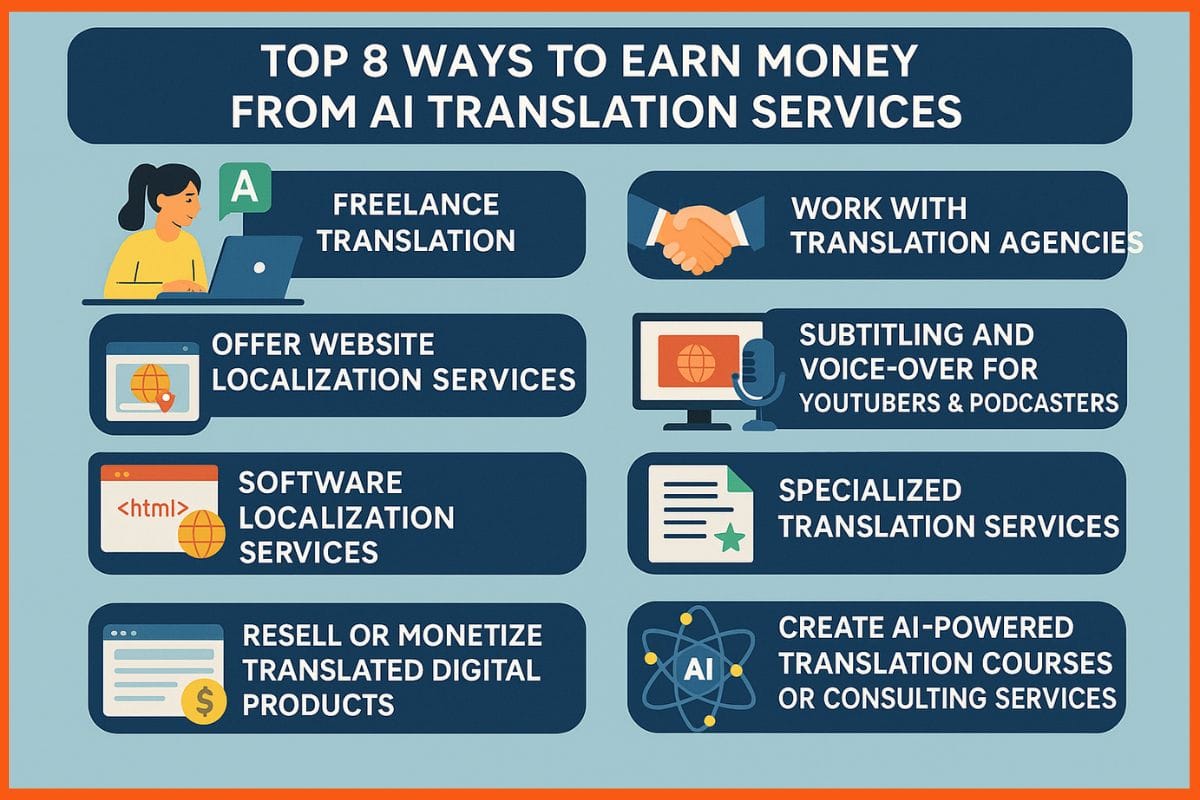Domino’s worldwide, over 21,300 pizza stores in over 90 international markets. Famous for revolutionizing pizza delivery with the 30-minute guarantee, Domino’s has consistently focused on innovations such as online and mobile ordering, the Domino’s Tracker, and a wealth of items on its menu, which now features pizzas, breadsticks, and chicken wings. The company stands on a franchise model where over 95 percent of stores are owned by the franchisee, mostly starting as delivery men or pizza makers. In everything, service has shown the public the technological advancements gained through community effort through charitable sponsorship. And, of course, to deliver hot and freshly made pizzas, quickly and with absolute reliability – an enduring mission in the making that would see Domino’s become a household name and a leader in the global pizza industry.
About Domino’s
Domino’s Business Model
How Domino’s Makes Money I Revenue Model of Domino’s
Domino’s Unique Selling Proposition
Domino’s SWOT Analysis
About Domino’s
Tom and James Monaghan began their glorious venture in 1960, having bought a little pizzeria in Ypsilanti, Michigan, and christened it with the glorious title of Domino’s Pizza. Before long, Tom bought out his brother’s share, and by 1965, he had gone up to three stores, officially adopting the name Domino’s. The company accelerated growth with franchising in 1967 and a 30-minute delivery guarantee, which, in many respects, set the standard in the fast and reliable pizza delivery business. By the late 1980s, Domino’s had opened thousands of stores across new menu items and international expansion in North America, Europe, and beyond.
Today, Domino’s operates over 21,000 stores in more than 90 countries and continues to drive technology-related growth and operational efficiencies. Their latest strategies run parallel with the idea of “fortressing” – opening additional stores in existing markets to reduce delivery times and increase customer satisfaction, while taking strategic action on investing in digital ordering and automating. Irrespective of the recent economic headwinds and unsteady demand in some lagging areas, Domino’s plans to secure its foothold, using its resilient franchise model, while simultaneously strengthening its profitability and further enhancing innovation and cost optimization.

Domino’s Business Model
Domino’s operates a hybrid model that focuses on franchising and tech-based direct sales. It is also a global franchised company; the percentage of franchised stores is more than that of company stores. All the company-run stores pay initial franchise fees and also pay ongoing royalties based on sales, while the processes are run under the franchise. This helps Domino’s in its rapid expansion. This way, little capital risk might suffice in serving the operations as the day-to-day running of operations is left to franchisees, but they have the support of brand equity, a supply chain, and marketing. The vast majority of the company’s revenue is driven through selling ingredients such as dough, toppings, etc., hence generating a supply chain segment.
Digital innovation is intrinsic to the value proposition of Domino’s, where orders are received mostly through its website and mobile application with real-time tracking, as well as personalized offers. In addition, sales revenue can be attributed to the sales of pizzas and sides; delivery fees, franchise royalties, and, of course, revenues from that supply chain. Aside from these, Domino’s would also have loyalty programs, custom marketing, and menu localization efforts to attract diverse customer segments around the world. All of these then become intertwined within such approaches whereby strategies like having ‘fortresses’ – more stores in denser areas-would expedite delivery speeds, thus increasing convenience to customers while enhancing competitiveness.
How Domino’s Makes Money I Revenue Model of Domino’s
Domino’s has a multi-faceted revenue-generating system going far beyond just selling pizza. Selling its piquant pizzas and other related items forms its main revenue stream, but also includes royalties and fees from franchise sales, delivery service charges-it mainly gets its revenue through operations in the supply chain. Even though it earns a fraction of its ultimate income from its company-owned outlets, most of its restaurant locations are franchised, requiring franchisees to pay one-off fees attached to them, besides ongoing sales-dependent royalties to the businesses. Such revenue-from-sale provisions of franchising are overshadowed from above-in terms of actual contribution, the total sales of Domino, approximately 60% of income from operations.
On this basis, as mentioned above in the revenue generation franchise model, investment costs are incurred upfront in rapid expansion, giving rise to minimal risk in capital. Deliveries, ads coupled with partnerships, and product merchandising have contributed significantly to the revenue haul. While most of Domino’s revenue is derived from its supply chain business, which provides dough, toppings, and other ingredients to its franchise owners, most customers get to see it as an excellent fast-food shop-that eating pizza is better for efficiency because it is less messy.
Domino’s Unique Selling Proposition
The unique selling proposition (USP) of Domino’s Pizza changed the pizza industry when it guaranteed, “fresh hot pizza delivered in 30 minutes or it’s free”: a promise few competitors offered and that became the standard against which speed and reliability in the fast-food business were judged. This brazen promise was not only a guarantee of quality in pizzas. More importantly, it was the very hallmark of convenience and dependability that addressed the needs of busy customers who considered their time valuable. The 30-minute promise became a useful method in gaining customer trust and loyalty while forcing rivals to improve upon their delivery services.
Even after having modified the original guarantee on grounds of safety, there has still been an unwavering focus on speed, consistency, and technological innovation. This strategy remained one of the key differentiators for Domino’s brand. Real-time tracking and online ordering systems, along with a very effective supply chain in place, ensure that the delivery of food takes place quickly and in a reliable manner anywhere across the world. The unique selling propositions of Domino’s are steeped in operational excellence and consumer-oriented convenience, truly earning for it the name of the fastest-ever company to deliver pizzas with utmost dependability.

Domino’s SWOT Analysis

Strengths
- Excellent international brand visibility and the market leader with more than 21,300 global stores spread over 90-plus markets.
- User-friendly franchise model—with nearly 99 percent of stores being franchises—allowing rapid expansion, less capital investments, and strong cash flows.
- Technological advancements like digital ordering, mobile apps, and personalized in-house delivery operating systems like Domino’s PULSE™ and DOM OS drive more than 85 percent of Domino’s U.S. sales digitally.
- Operational expertise in delivery is based on speed and reliability, and a strong supply chain for quality consistency.
Weaknesses
- Delivery and carryout highly influence the degree of dependency of the business on delivery cost, competition from third-party aggregators, and operationally disrupted companies.
- Fewer items on its menu than some of its competitors, thereby limiting the appeal to wider customer segments and those whose criteria include healthier or more diverse options.
- Among many other factors, the dependent service franchisees deliver variable service quality among locations, posing a challenge to meet the needed uniform standards.
- It also poses hazards on the supply chain front, along with labor markets, such as attracting and retaining employees, and rising costs of operations.
Opportunities
- Expand the business to newer markets and emerging markets, especially in regions where it has not established a customer base.
- Menu innovation will keep it tailored toward changing consumer preferences, including healthier, plant-based, or regionally oriented offerings.
- Enhance customer experience and activation using digital technologies such as AI-formulated personalization, delivery drones, and better loyalty programs.
- Collaborations with outside delivery platforms to explore exponential access to new customer segments while still maintaining their proprietary channels.
Threats
- Competition from international pizza chains, local eateries, and third-party delivery aggregators is immense and will eat into the market share while exerting pressure on margins.
- An evolution of consumer preferences toward healthy and diverse alternatives in food fare may mean lower demand for classical pizza sales.
- Regulatory and economic liabilities regarding increasing labor and ingredient expenses, data privacy laws, and vulnerability to overall economic downturns affecting discretionary expenses.
- Some financial issues relate to closing poorly performing stores in certain markets and declining same-store sales in regions more affected by shifts in consumer behavior and difficult economic headwinds.
Conclusion
To summarize, Domino’s at present is the worldwide leader in pizza delivery, driven by innovative delivery, its strong franchise, and technology and operational efficiency. Competition, changing consumer preferences, and operational vulnerabilities have posed challenges for the company. Nevertheless, its strength in brand equity, digital transformation, and supply chain management will help in the future growth of the company. By taking advantage of new market growths, changes in menu items, and technological tweaks, Domino’s stands to maintain its competitive edge and remain dynamic amidst changing market forces, in retaining its position of being the most preferred pizza place with consumers around the globe.

FAQs
What is Domino’s Pizza known for?
Domino’s Pizza is known worldwide for revolutionizing pizza delivery with its iconic “30 minutes or free” guarantee.
What is the business model of Domino’s?
Domino’s runs a franchise-based business model, with over 95% of its stores operated by franchisees. The company earns revenue from franchise fees, royalties, supply chain sales (dough, toppings, etc.), and digital platforms.
How does Domino’s make money?
Domino’s earns revenue through:
- Sales of pizza and sides
- Franchise fees and royalties
- Supply chain operations (ingredients to franchises)
- Delivery and service charges
- Digital ordering and loyalty programs
What role does technology play in Domino’s success?
Technology is central to Domino’s success. Features like online ordering, the Domino’s Tracker, customized offers streamline operations and enhance the customer experience.











